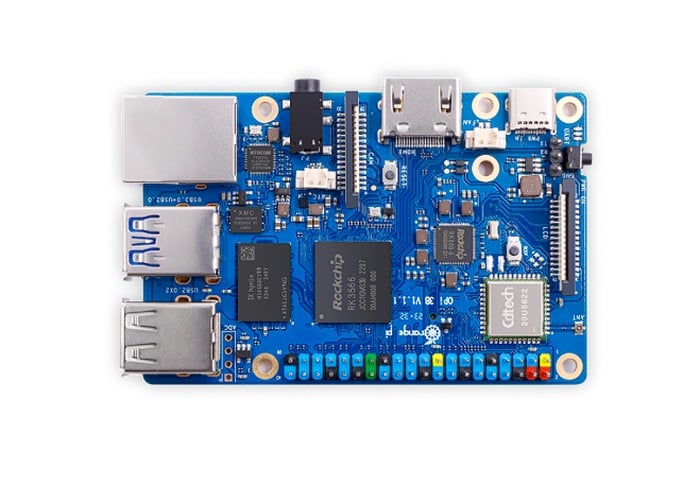The last week or so the official Raspberry Pi development team rolled out a new version of its Raspberry Pi OS operating system now featuring Debian Bookworm. The update is an incremental update from the previous Debian Bullseye release but marks a significant milestone in the evolution of the Raspberry Pi ecosystem, introducing major architectural changes that promise to enhance performance, security, and user experience. However if you have a Orange Pi Zero 3 mini PC you might be interested to know that you can run the older Raspberry Pi OS Bullseye operating system on it with success.
Check out the video below to learn more about how to do it. The Orange Pi Zero 3 is a versatile and powerful single-board computer that offers a range of features and capabilities. This open-source development board is not just a consumer product, but a tool designed for anyone who wants to use technology to create and innovate. It’s a simple, fun, and useful tool that can be used to shape the world around you.
The Orange Pi Zero 3 is powered by an Allwinner H618 quad-core 64-bit 1.5GHz high-performance Cortex-A53 processor. This CPU is complemented by a Mali G31 MP2 GPU, which supports OpenGL ES 1.0/2.0/3.2 and OpenCL 2.0. This combination of CPU and GPU provides the Orange Pi Zero 3 with the power and performance to handle a range of tasks, from running complex applications to playing high-definition video.
Orange Pi Zero 3 mini PC
The Orange Pi Zero 3 comes with a choice of 1GB, 1.5GB, 2GB, or 4GB LPDDR4 memory, which is shared with the GPU. This provides the board with the flexibility to handle a range of tasks, from running multiple applications simultaneously to processing large amounts of data.
In terms of storage, the Orange Pi Zero 3 features a micro SD card slot and 16MB SPI Flash. This provides ample space for storing applications, data, and operating systems. The board supports a range of operating systems, including Android TV 12, Ubuntu, and Debian.
Previous articles we have written that you might be interested in on the subject Raspberry Pi :
The Orange Pi Zero 3 also features a range of connectivity options. It supports 10/100M/1000M Ethernet, and comes with an AW859A chip that supports IEEE 802.11 a/b/g/n/ac and Bluetooth 5.0. This allows the board to connect to a range of devices and networks, making it a versatile tool for a range of applications.
For video output, the Orange Pi Zero 3 features a Micro HDMI 2.0a port and supports TV CVBS output, which supports PAL/NTSC via a 13pin expansion board. Audio output is provided through the Micro HDMI output and a 3.5mm audio port, which is also available via the 13pin expansion board.
The Orange Pi Zero 3 mini PC is powered through a USB Type C interface and features three USB 2.0 ports for connecting peripherals. The board also features a 26pin connector with I2C, SPI, UART, and multiple GPIO ports, and a 13pin connector with USB 2.0, TV-OUT, LINE OUT, IR-RX, and 3 GPIO ports.
The board also features a debug serial port with UART-TX, UART-RX, and GND, and an LED light for power and status indication. An infrared receiver is also included, which supports infrared remote control via the 13pin expansion board. In terms of physical specifications, the Orange Pi Zero 3 measures 85mm by 56mm and weighs just 30g. This compact size and light weight make it a portable and convenient tool for a range of applications.
The Orange Pi Zero 3 is a powerful and versatile single-board computer that offers a range of features and capabilities. Whether you’re a hobbyist looking to experiment with different operating systems and applications, or a professional looking for a powerful and flexible development tool, the Orange Pi Zero 3 offers a compelling option.
Filed Under: Hardware, Top News
Latest aboutworldnews Deals
Disclosure: Some of our articles include affiliate links. If you buy something through one of these links, aboutworldnews may earn an affiliate commission. Learn about our Disclosure Policy.







